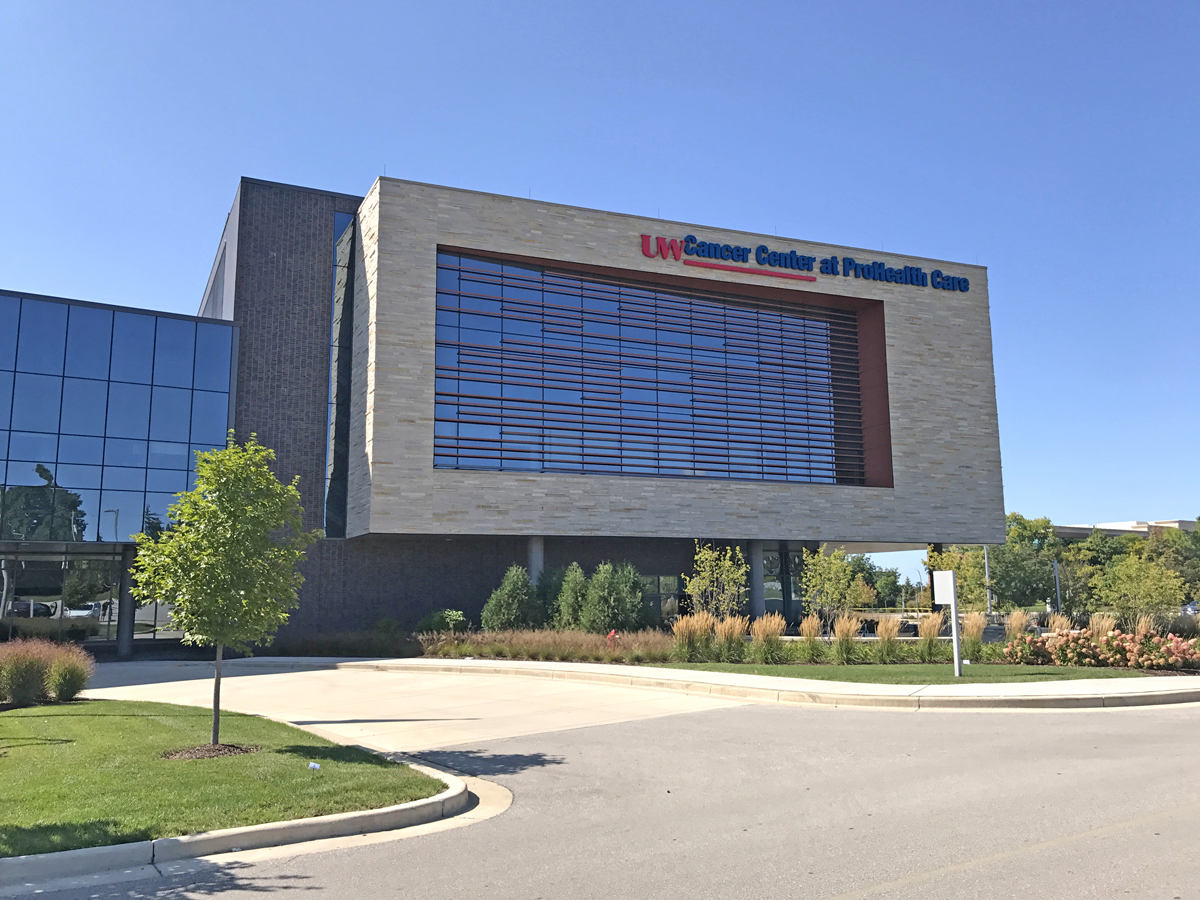Architectural Signs
Vital Signs
Three signmakers, three different ways of working in healthcare.
Published
7 years agoon

Have you ever been lost in a hospital? It can be an unsettling feeling, as one beige corridor leads to another.
Or so it was.
Today’s hospitals are increasingly sensitive to patient satisfaction. Thank the Affordable Care Act which, in part, linked Medicare reimbursements with patient satisfaction. The money at stake is typically a tiny percentage of a facility’s potential revenue, but the mindset shift it represents is worth much more. Decades ago, a hospital was for sick people. Now, hospitals – sorry, healthcare organizations – are trying to attract everyone from kids to the worried well to the truly ill. Mergers and acquisitions are on the rise as these organizations race to increase brand awareness. (For a more detailed snapshot, try the “50 things to know about the hospital industry” pieces published annually on beckershospitalreview.com).
Those consolidations drive new branding campaigns and, of course, new signage. And with all the emphasis on being a friendly face in the community, wayfinding is a priority, according to John McCarthy, national sales manager at Kieffer | Starlite (Sheboygan, WI). They’re a national player, but even they studiously stay abreast of healthcare signage regulations. Think illuminated signs for emergency departments, as well as guidelines to reduce dust and potential pathogen exposure.
EXTRAORDINARY MEASURES
Speaking of scary, if you’re working in healthcare, take the amount you expect to spend on a project and triple it. Between contamination concerns and constantly occupied beds, there’s no downtime in these spaces.
“It felt weird coming into a patient’s room and totally invading their space. I felt like I should have brought flowers,” said Elizabeth Howard, owner/production manager for Lola Red Design Group (San Luis Obispo, CA). When the nearby Arroyo Grande Community Hospital needed new signage, Howard hoped to be the provider, but no luck.
AdvertisementHoward called around to other sign companies. Had they completed the work? Nope. Did they know who had? No luck there, either. Unabashed, she contacted the hospital itself and worked herself onto its vendor list. And when the hospital wanted the dry-erase boards above patient beds replaced, Howard placed an ambitious bid. She was the only vendor who pledged to reuse glass from the original signs.
In Howard’s case, it took some back-and-forth, but she wasn’t forced to assume full responsibility for the glass. Instead, she said she’d be liable for damage that occurred off hospital grounds. Howard borrowed racks and foam spacers from a neighboring glass and window company, and learned how to tie the glass down in her truck. She negotiated with hospital higher-ups to use disposable gloves inside the space, rather than hand sanitizer. (“We went through a ton of latex gloves!”) Finally, Howard made sure her team wore matching company shirts along with clean pants – no paint – and served as the sole liaison between patients and medical personnel.
Mark Andreasson, president, Design Communications Ltd. (DCL; Boston), may have a few more direct reports than Howard, but his strategy is roughly the same: ensuring workers are polite, well-dressed and sensitive to the environment. They avoid working in high-traffic walkways during busy hours – and more: “We don’t want to create objectionable odors, say from adhesives, and a lot of times there are specific wallcoverings in hospitals that aren’t compatible with normal foam tapes. You have to use tapes and adhesives specifically engineered to inhibit plasticizer migration.” This requires exquisite care and attention. Sound familiar?
GOOD TIMING
McCarthy has had the same experience. “Most jobs you can do in three days,” he said. For a recent ProHealth project, “some of these took two weeks, three weeks.” His installers coordinated their work down to the quadrant of the hospital and the hour of the day. They sent daily progress updates and forecast their plans for the coming 24 hours.
Starting in late 2014, Kieffer | Starlite subcontracted with CannonDesign to begin a multi-year collaboration for ProHealth Care. The healthcare organization was partnering with the Univ. of Wisconsin to open a joint cancer center, where the design concept was honed. In 2015, Kieffer | Starlite created signage for more than a dozen ProHealth clinics, followed by a revamp of three hospitals in the western Milwaukee suburbs.
AdvertisementThere was one primary sticking point with the client, McCarthy said: “You really have to be very clear and concise. We went back and forth on the wayfinding.” Today’s aesthetic is a mix of providing as much information as possible and the desire to do so in a clean, sleek way.
DESIGNING THE FUTURE
According to Andreasson, the best designers go beyond wayfinding: “The international design trend is to make [a hospital] more like a comfortable hotel. We have seen a bit of a move away from endless over-signed places. Any facility that’s been there for a length of time tends to accumulate years of modification and changes that are done somewhat ad hoc. A lot of the hospitals try to keep a comprehensive design theme through the entire program.” That means streamlined designs that guide visitors efficiently, not overwhelming, tell-all designs.
Healthcare execs are realizing what their peers in retail and hospitality have long known: It’s all about aesthetics. In hospitals, that means minimizing anxiety and clutter, as with reader boards that are functional, not flashy. “They don’t want it to be garish, but they see the need,” McCarthy said. He’s even been selling electronic message centers for outdoor signage that promotes such fashionable offerings as cooking classes and wellness programs.
Plus, an increasingly tech-savvy population gravitates to touchscreens that help with wayfinding and even play. Children’s hospitals have been on the forefront, Andreasson said, citing color-changing walls and large-scale digital prints. “The whole thrust of this is to make these environments more relaxing, inviting and interactive.”
ADVICE FOR SMALL SHOPS
The truth about the future is that it’s not in the hands of national sign companies alone. Some, like Kieffer | Starlite, don’t yet offer a top-to-bottom service. And, per McCarthy, it’s unlikely anyone truly does. He believes his competitors specialize in external or internal work – then subcontract to others: “You can’t be good at both; you really can’t. All that ADA sign stuff is really specialized and any company that is doing the interior stuff is not doing exteriors,” he said.
Yet, Andreasson said his company prefers to do it all. There’s evidence he’s fairly successful, too; DCL boasts 40 healthcare clients, about a dozen of which are current. His words for smaller shops are clear: “I wouldn’t look to healthcare if profit margins are shrinking elsewhere. Healthcare is one of the most cost-conscious groups out there.” These projects can sink a shop that funnels its resources into an all-consuming job, adding installers only to fire them months later. He thought Howard’s approach – getting on the vendor list, starting small – made sense. The trick is not to overextend yourself, which can lead to feast-or-famine finances.
Advertisement“So often with these, you’re really only as good as your last project,” Andreasson said. “They need to do the job and finish it successfully to have that accumulated knowledge to leverage into new opportunities.” And Ed Davies, multi-media marketing manager for Kieffer | Starlite added this advice: “Don’t put all your eggs in one basket in retail; there’s a lot more out there.” So true.
As for Howard, our interview reminded her she never did figure out who did the original signage. She’s still determined to find out.

SPONSORED VIDEO
Introducing the Sign Industry Podcast
The Sign Industry Podcast is a platform for every sign person out there — from the old-timers who bent neon and hand-lettered boats to those venturing into new technologies — we want to get their stories out for everyone to hear. Come join us and listen to stories, learn tricks or techniques, and get insights of what’s to come. We are the world’s second oldest profession. The folks who started the world’s oldest profession needed a sign.
You may like
Advertisement
Subscribe

Magazine
Get the most important news
and business ideas from Signsofthetimes Magazine.
Advertisement
Most Popular
-

 Tip Sheet3 days ago
Tip Sheet3 days agoAlways Brand Yourself and Wear Fewer Hats — Two of April’s Sign Tips
-

 Business Management2 weeks ago
Business Management2 weeks agoWhen Should Sign Companies Hire Salespeople or Fire Customers?
-

 Women in Signs2 weeks ago
Women in Signs2 weeks ago2024 Women in Signs Award Winners Excel in Diverse Roles
-

 Real Deal4 days ago
Real Deal4 days agoA Woman Sign Company Owner Confronts a Sexist Wholesaler
-

 Editor's Note1 week ago
Editor's Note1 week agoWhy We Still Need the Women in Signs Award
-

 Benchmarks13 hours ago
Benchmarks13 hours ago6 Sports Venue Signs Deserving a Standing Ovation
-

 Line Time2 weeks ago
Line Time2 weeks agoOne Less Thing to Do for Sign Customers
-

 Product Buying + Technology1 week ago
Product Buying + Technology1 week agoADA Signs and More Uses for Engraving Machines







